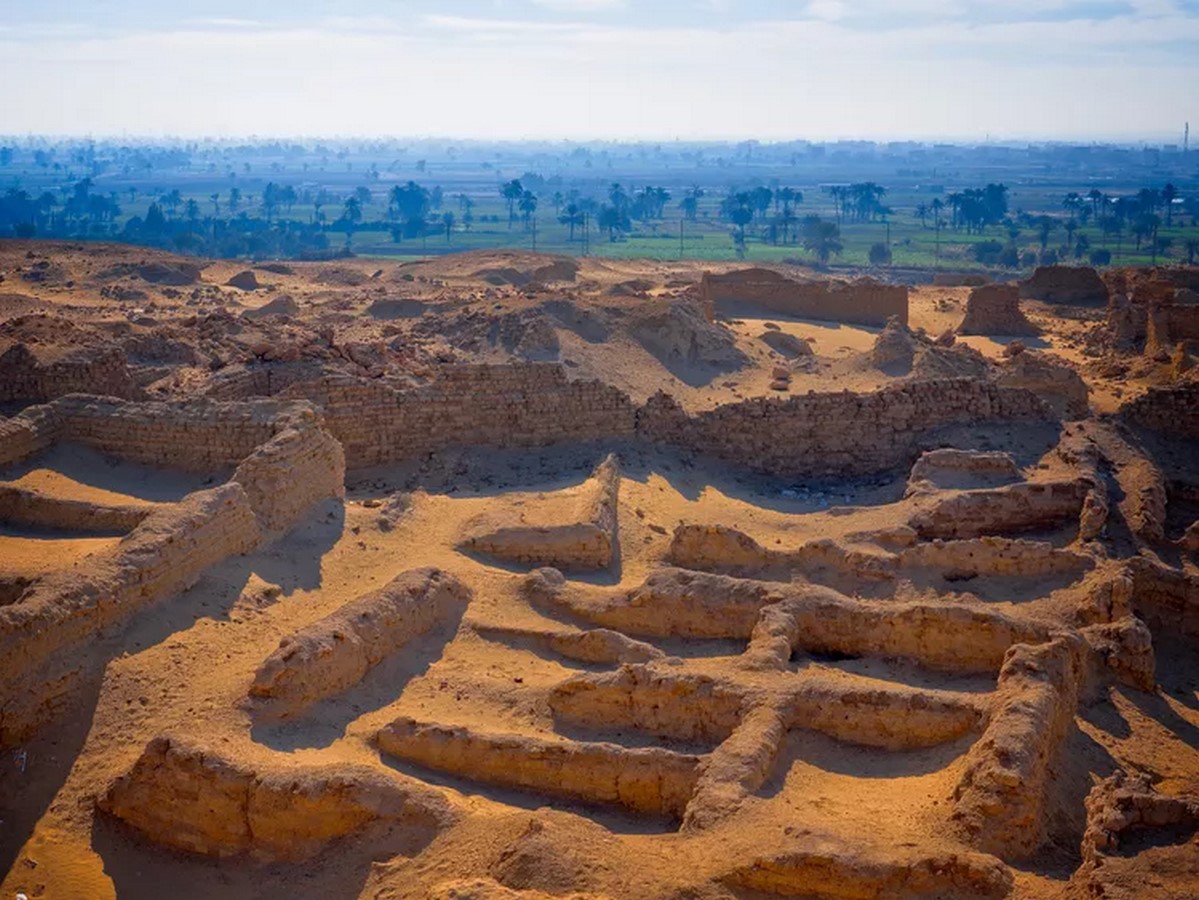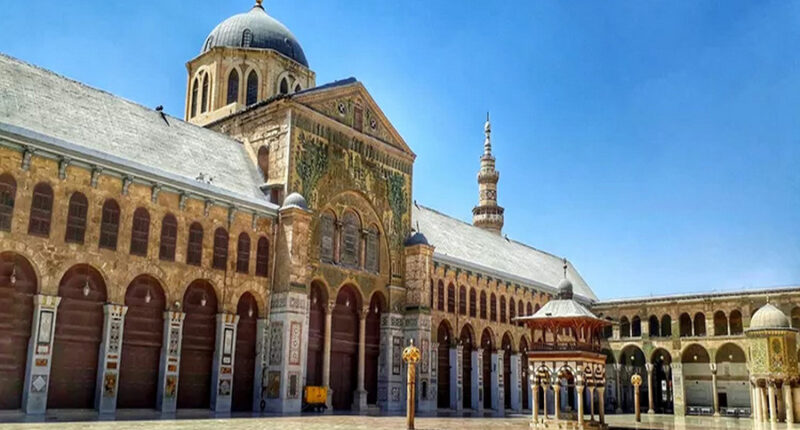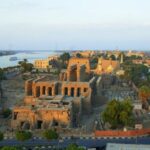Cities that have endured through millennia offer more than just a glimpse into the past; they are living testaments to the resilience and ingenuity of human civilization. These ancient cities, with their rich histories and architectural marvels, continue to thrive, serving as cultural hubs and repositories of tradition. While some have weathered the ravages of time with remarkable resilience, others have faced challenges that threaten their existence. Here, we explore 14 of the oldest continuously inhabited cities in the world, each with its own fascinating story to tell.

Jericho, West Bank
Jericho, dating back to between 11,000 and 9,300 BCE, holds the distinction of being the oldest continuously inhabited city on Earth. Its ancient fortifications, dating back to 9,000 BCE, attest to its enduring legacy as the earliest known walled city. Situated below sea level, Jericho remains inhabited, making it the lowest permanently inhabited site on the planet.

Damascus, Syria
With evidence of habitation dating back to around 10,000 to 8,000 BCE, Damascus is one of the oldest continuously inhabited cities globally. Its strategic location has made it a crossroads of civilizations throughout history, leaving behind a rich tapestry of cultural heritage. Despite recent challenges, Damascus continues to thrive, serving as a beacon of resilience in the face of adversity.

Ray, Iran
Ray, Iran, boasts evidence of habitation dating back to around 6,000 BCE, with historical monuments that bear witness to its storied past. From Cheshmeh-Ali to Gebri Castle, the city’s landmarks offer a glimpse into its ancient origins and cultural significance. Ray remains a testament to Iran’s rich heritage and enduring legacy.

Erbil, Iraqi Kurdistan
Erbil, continuously inhabited since about 6,000 BCE, is characterized by its iconic Citadel, a UNESCO World Heritage site. Despite its ancient roots, Erbil pulsates with modern energy, boasting a vibrant nightlife and bustling cityscape. As a cultural crossroads, Erbil bridges the past with the present, offering a glimpse into Kurdistan’s dynamic history.

Aleppo, Syria
Aleppo, with evidence of habitation dating back to about 6,000 to 5,000 BCE, occupies a pivotal place in the ancient world. As a hub of trade and commerce along the Silk Road, Aleppo’s historical significance is matched only by its architectural splendor. Despite the ravages of conflict, the city’s enduring spirit shines through, a testament to its resilience and fortitude.

Faiyum, Egypt
Faiyum’s ancient roots trace back to the dawn of civilization, with settlements dating back to around 5,000 BCE. From the worship of the crocodile deity Sobek to its vibrant agrarian communities, Faiyum’s history is as diverse as it is fascinating. Today, Faiyum remains a testament to Egypt’s enduring legacy and cultural heritage.
Athens, Greece
Athens, the cradle of Western civilization, has been continuously inhabited since 5,000 BCE, if not earlier. Home to iconic landmarks such as the Acropolis and Parthenon, Athens remains a beacon of intellectual and cultural prowess. From its ancient philosophers to its modern-day scholars, Athens continues to inspire and captivate the world.

Byblos, Lebanon
Byblos, with evidence of habitation dating back to about 5,000 BCE, has been a continuous city for millennia. From its Phoenician origins to its incorporation into various empires, Byblos boasts a rich tapestry of history and heritage. Today, it stands as a UNESCO World Heritage site, a living testament to Lebanon’s ancient legacy.
Shush, Iran
Shush, formerly known as Susa, has been continuously inhabited since around 5,000 to 4,000 BCE. With its ancient archeological mounds and monuments, including Darius’ Palace, Shush is a treasure trove of Persian history and culture. Despite the passage of time, Shush remains a vibrant city, preserving its ancient legacy for future generations.

Jerusalem
Jerusalem, with a history dating back to 4,500 to 3,400 BCE, holds a unique place in the annals of civilization. As the nexus of three major religions—Judaism, Christianity, and Islam—Jerusalem is steeped in spiritual and cultural significance. Despite its tumultuous past, Jerusalem continues to inspire awe and reverence, serving as a symbol of hope and unity.
Plovdiv, Bulgaria
Plovdiv, with evidence of habitation dating back to around 4,000 BCE, is a testament to Bulgaria’s rich cultural heritage. From its Thracian origins to its Roman and Ottoman influences, Plovdiv’s history is as diverse as it is captivating. Today, it stands as a vibrant cultural hub, attracting visitors from around the world with its ancient ruins and modern charm.

Sidon, Lebanon
Sidon, inhabited since about 4,000 BCE, holds a strategic position on the Mediterranean Sea, making it a crucial port city throughout history. From its Phoenician roots to its conquest by various empires, Sidon’s history is a testament to Lebanon’s enduring resilience. Today, it remains a bustling center of trade and commerce, preserving its ancient legacy for future generations.

Luxor, Egypt
Luxor, formerly the ancient city of Thebes, has been continuously inhabited since about 3,200 BCE. Home to iconic landmarks such as Karnak and the Valley of the Kings, Luxor is a treasure trove of Egyptian history and culture. Despite the passage of millennia, Luxor remains a vibrant city, attracting visitors from around the world with its awe-inspiring ruins and timeless allure.
Argos, Greece
Argos, dating back to around 3,000 BCE, is one of the oldest continuously inhabited cities in Greece. From its Mycenaean origins to its Roman and Byzantine influences, Argos boasts a rich tapestry of history and heritage. Today, it stands as a testament to Greece’s enduring legacy, preserving its ancient ruins and traditions for future generations.

In conclusion, these ancient cities stand as living testaments to the resilience, ingenuity, and cultural richness of human civilization. From the bustling streets of Damascus to the timeless ruins of Luxor, each city has a story to tell, offering a window into the past and a glimpse into the future. As guardians of our collective heritage, these cities inspire awe and reverence, reminding us of the enduring legacy of those who came before us.























